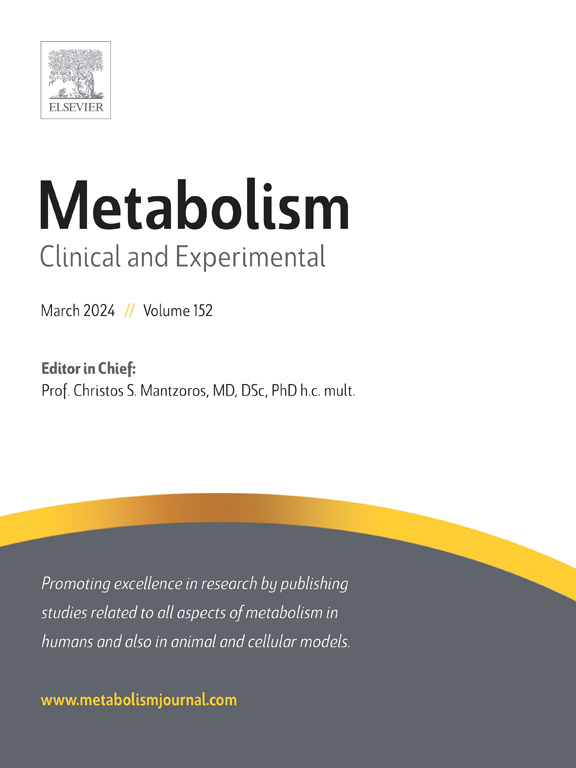Exosomal miRNAs in muscle-bone crosstalk: Mechanistic links, exercise modulation and implications for sarcopenia, osteoporosis and osteosarcopenia
IF 11.9
1区 医学
Q1 ENDOCRINOLOGY & METABOLISM
引用次数: 0
Abstract
This review investigates the emerging role of exosomal microRNAs (miRNAs) as pivotal mediators of bidirectional communication between the skeletal muscle and bone tissue, with significant implications for age-related musculoskeletal disorders. In aging populations, sarcopenia often coexists with osteoporosis, forming osteosarcopenia, which markedly increases fracture risk, disability, and mortality. While traditional paradigms emphasize mechanical loading and endocrine pathways, emerging evidence has revealed that exosomes carrying bioactive miRNAs represent a novel class of paracrine factors in the muscle-bone axis. We examined how muscle-derived exosomal miRNAs (miR-34a and miR-27a-3p) influence bone metabolism, while bone-derived exosomal miRNAs (miR-486-5p) modulate muscle physiology. For each miRNA, we identified the target messenger RNAs (mRNAs) and signaling mechanisms. Importantly, exercise has emerged as a potent modulator of this crosstalk, altering exosomal miRNA profiles to promote anabolic outcomes in both tissues. This bidirectional communication contributes to osteosarcopenia pathophysiology, leading us to propose a novel “Exosomal miRNA Regulatory Network” for diagnosis and pathogenesis. Exosomal miRNAs show promise as early biomarkers for subclinical deterioration and therapeutic targets. However, methodological challenges in exosome isolation, incomplete characterization of miRNA networks, and aging complexity must be addressed before clinical implementation.

外泌体mirna在肌-骨相互作用中的作用:机制联系、运动调节和对肌肉减少症、骨质疏松症和骨-骨减少症的影响
本文综述了外泌体microRNAs (miRNAs)作为骨骼肌和骨组织之间双向通讯的关键介质的新作用,对年龄相关的肌肉骨骼疾病具有重要意义。在老年人群中,骨骼肌减少症常与骨质疏松症共存,形成骨骨骼肌减少症,显著增加骨折风险、残疾和死亡率。虽然传统的范式强调机械负荷和内分泌途径,但新出现的证据表明,携带生物活性mirna的外泌体代表了肌肉-骨轴中一类新的旁分泌因子。我们研究了肌源性外泌体miRNAs (miR-34a和miR-27a-3p)如何影响骨代谢,而骨源性外泌体miRNAs (miR-486-5p)如何调节肌肉生理。对于每个miRNA,我们确定了目标信使rna (mrna)和信号传导机制。重要的是,运动已成为这种串扰的有效调节剂,改变外泌体miRNA谱,促进两种组织的合成代谢结果。这种双向交流有助于骨骼肌减少症的病理生理,因此我们提出了一种新的“外泌体miRNA调节网络”来诊断和发病。外泌体mirna有望成为亚临床恶化和治疗靶点的早期生物标志物。然而,在临床应用之前,必须解决外泌体分离、miRNA网络不完整表征和衰老复杂性方面的方法学挑战。
本文章由计算机程序翻译,如有差异,请以英文原文为准。
求助全文
约1分钟内获得全文
求助全文
来源期刊

Metabolism: clinical and experimental
医学-内分泌学与代谢
CiteScore
18.90
自引率
3.10%
发文量
310
审稿时长
16 days
期刊介绍:
Metabolism upholds research excellence by disseminating high-quality original research, reviews, editorials, and commentaries covering all facets of human metabolism.
Consideration for publication in Metabolism extends to studies in humans, animal, and cellular models, with a particular emphasis on work demonstrating strong translational potential.
The journal addresses a range of topics, including:
- Energy Expenditure and Obesity
- Metabolic Syndrome, Prediabetes, and Diabetes
- Nutrition, Exercise, and the Environment
- Genetics and Genomics, Proteomics, and Metabolomics
- Carbohydrate, Lipid, and Protein Metabolism
- Endocrinology and Hypertension
- Mineral and Bone Metabolism
- Cardiovascular Diseases and Malignancies
- Inflammation in metabolism and immunometabolism
 求助内容:
求助内容: 应助结果提醒方式:
应助结果提醒方式:


